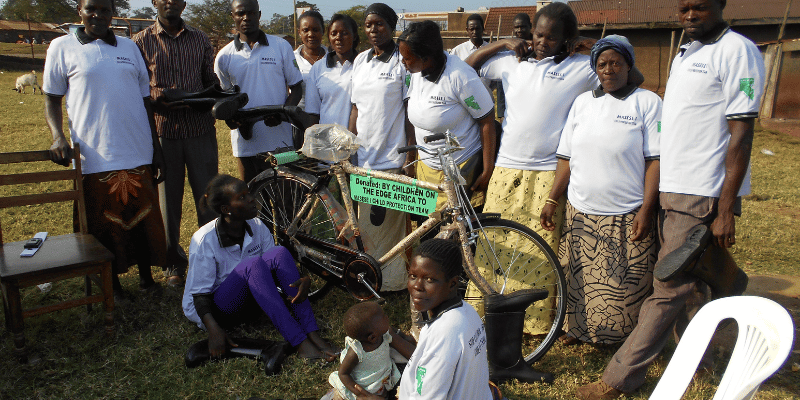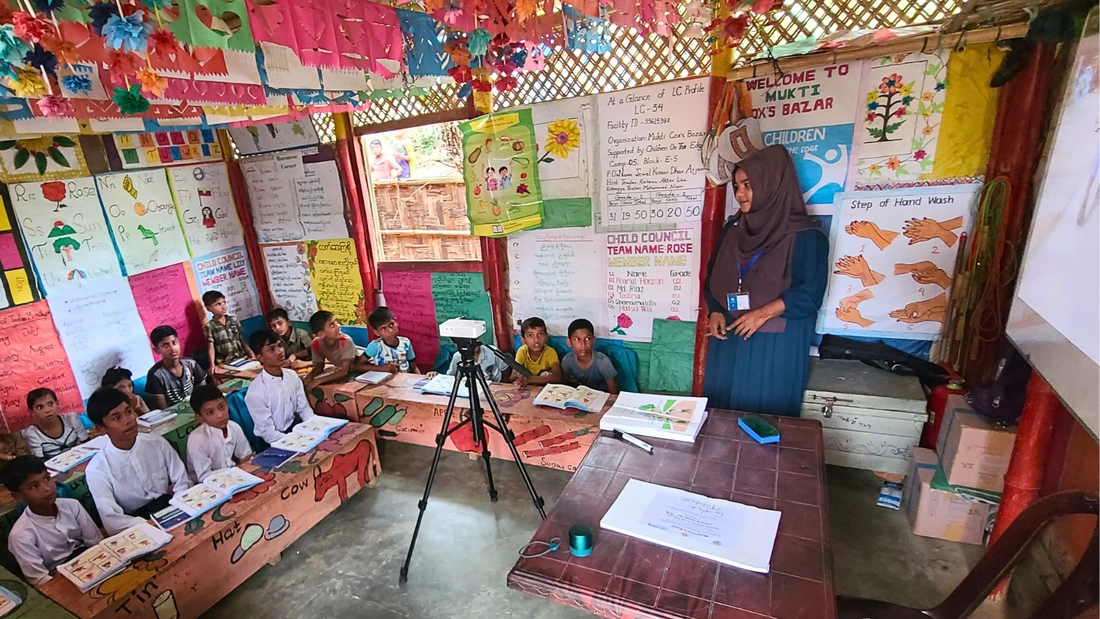|
Children on the Edge works to create conditions in which every marginalised child can flourish and thrive no matter where they live and irrespective of the challenging circumstances they face. We identify children in some of the world’s toughest situations and work alongside local communities to co-create protective environments, so marginalised children can safely live, learn, play and grow. This year, we reached more children than ever before, and saw three of our models of education and child protection replicated to new places, bringing sustainable change on a wider scale. CHILD PROTECTION TEAM MODEL IN UGANDAEndemic poverty in the slums surrounding Jinja puts thousands of children at risk of abuse, trafficking, neglect and exploitation. Since 2012 Children on the Edge have been developing a ‘Child Protection Team’ model with communities here, who work to create protective environments for their children. Child Protection Teams consist of a group of locally elected volunteers, who are trained and supported by Children on the Edge Africa to empower fellow residents to create safer communities where children can thrive. Through workshops and building relationships and trust with families, the teams counsel, train and increase awareness in their own communities. They address child protection issues, including trafficking, child abuse and child sacrifice, all through a low-cost, locally-owned model, that has transformed communities for the better. After 10 years of supporting Child Protection Teams in the slums of Jinja, we replicated the model, eight hours north in the Karamoja district. Poverty is rife here, and children are severely at risk, but we’re confident this community led approach has the potential to keep children safe, and help them grow. DIGITAL EDUCATION MODEL IN BANGLADESHIn the sprawling camps of Kutupalong, Rohingya refugee children are only permitted to learn through the Myanmar curriculum, which is written in Burmese, a language they don’t understand. Their own dialect has no universally accepted script, and they are barred from learning the local language in Bangladesh. These language barriers presented seemingly insurmountable obstacles to children’s learning, so in 2019, we piloted a digital education programme which relied on visual and verbal communication. Through video lessons dubbed in the Rohingya dialect, children and teachers could finally understand what was being taught. We now provide daily video lessons in all our classrooms in Kutupalong, the Doharazi enclaves, the slums of Cox’s Bazar and Bhasan Char island, reaching over 7,000 children with meaningful, fun education. In 2022, this model was replicated to the slums of Patna, India where our learning centres support Dalit children who are unable to access quality mainstream education. Digital lessons are complemented by our ‘Moja Kids’ online newsletter, produced by the children, giving them a chance to share their experiences with children in classrooms across Bangladesh and now in India, Uganda and Cambodia. Content is produced using simply constructed green screen studios and special effects employed by our digital team in Cox’s Bazar.The team also uses dubbed visual media from all around the world, so they can not only connect with peers from beyond the confines of the refugee camps and slums where they live, but also enjoy experiences of natural wonders, wildlife, culture, sports and news. CLUSTER LEARNING MODEL IN UGANDABreaking down barriers to education has always been at the forefront of our work. In the Kyaka II refugee settlement in Uganda, our Cluster Learning Approach provides a sustainable, cost effective early education model that creates access to quality learning for thousands of Congolese refugee children, who are otherwise cut off from support at the most vital stage of their development. When lockdown was announced in Uganda, and our Early Childhood Development Centres were closed, we pivoted our approach to provide small ‘cluster group’ lessons in communal spaces to ensure the thousands of children could continue their education. Instead of being limited to buildings, lessons were arranged wherever the children were - in people’s homes and compounds, shaded areas around local churches, and under trees. When lockdown lifted, we realised this approach could be used to meet the early education needs of thousands of refugee children. We took buildings out of the equation, and began to replicate and scale the model to other zones of the settlement, which is now supporting over 4,000 of the youngest Congolese refugee children to access sustainable, community-led education. Children on the Edge envisions a world in which every child thrives regardless of their geography, ethnicity, gender, or caste. Sparked into life by the late Dame Anita Roddick in 1990, the children on the edge we served at the start were those incarcerated and forgotten in Romanian orphanages. Since this time we have worked hand-in-hand with communities to deliver over 50 programmes in 18 countries. Today, the “edge” takes us into refugee camps, warzones and slums, where we support children fleeing conflict, facing internal displacement, and living with caste discrimination, poverty, and exploitation. The spark that began us is still in motion to this day. It comes from a disruptive dedication to seeking out those who are truly on the edge of our societies, and supporting them to thrive. In the past year we have provided safe spaces and education for over 22,000 children including: Rohingya, Syrian, Congolese and Ukrainian refugees; internally displaced children in Myanmar; Dalit children in India and slum dwelling children in Uganda. Support us
0 Comments
Your comment will be posted after it is approved.
Leave a Reply. |
RECEIVE OUR EMAILSBlog Categories
All
Archives
July 2024
|
|
JOIN US ON SOCIAL MEDIA
|
Annual Report | Contact Us | Jobs | Media Centre | Resources | Shop
Accessibility & Policies: Accessibility | Equity, Diversity & Inclusion Policy | Complaints| Privacy Policy | Safeguarding
Accessibility & Policies: Accessibility | Equity, Diversity & Inclusion Policy | Complaints| Privacy Policy | Safeguarding
Children on the Edge, 5 The Victoria, 25 St Pancras, Chichester, West Sussex, PO19 7LT, UK | 01243 538530 | [email protected]







 Give monthly
Give monthly Fundraise for us
Fundraise for us RSS Feed
RSS Feed
